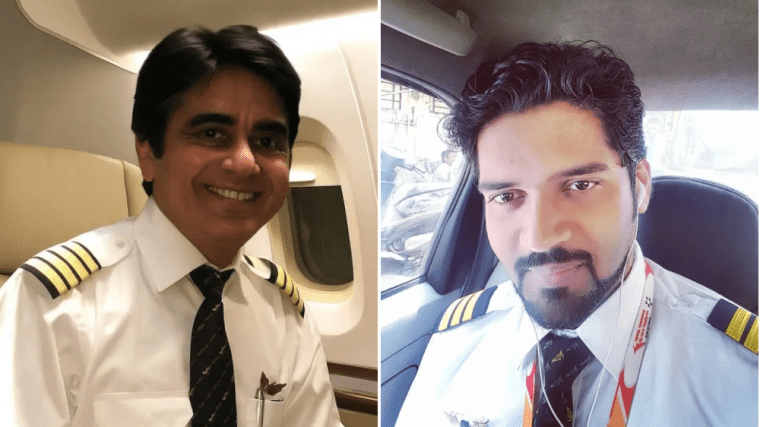Air India pilots were aware that the captain of the doomed plane was suffering from depression and had been on medical leave, The i Paper has been told
MUMBAI – Air India pilots were aware that the captain of the plane that crashed last month killing 260 people was suffering from depression and had been on medical leave for some time, The i Paper has been told by a top Indian aviation safety expert.
All but one of the 242 people on board the Boeing 787 Dreamliner to London Gatwick were killed as well as 19 others when the aircraft plunged into a medical student hostel last month shortly after take-off from India’s Ahmedabad airport.
A preliminary report from India’s Aircraft Accident Investigation Bureau (AAIB) found that the two switches controlling fuel flow to the jet’s two engines had been moved to the “off” position, causing the plane to crash seconds after take-off.
The switches were moved in succession, one second apart, according to the AAIB’s report. Some 10 seconds later, the switches were turned back on. The report did not say whether the switches were turned off accidentally or deliberately.
Air India ruled out on Tuesday any technical fault in the fuel control system of its Boeing fleet, increasing speculation that the fuel switches may have been cut off deliberately.

“Air India has completed precautionary inspections on the locking mechanism of Fuel Control Switch on all Boeing 787 aircraft in its fleet. In the inspections, no issues were found with the said locking mechanism,” an Air India spokesperson said.
US officials, who are part of the investigation and have access to the report, say that the flight’s First Officer Clive Kundar, 32, asked the flight’s Captain, Sumeet Sabharwal, 56, why he turned off the fuel switches, according to a report in The Wall Street Journal. Sabharwal reportedly responded that he did not turn off the switches.
The switches in question have a detent that prevents them being accidentally moved. The switch has to be pulled up and out to clear the detent, then moved vertically. There are also two guardrails on either side of the switches to prevent accidental touch.
The revelations have raised suspicions that the captain may have cut fuel to the engines deliberately, and prompted concerns over the state of the pilot’s mental health.
Pilots ‘knew of captain’s mental health concerns’
Captain Mohan Ranganathan, a veteran aviation safety expert in India and former Boeing pilot, told The i Paper that multiple pilots with Air India had been aware that Captain Sabharwal had been on leave with mental health struggles, despite having been found medically fit.
“I have heard from more than two Air India pilots that the captain Sumeet was struggling with mental health and had been on medical leave for some time,” he said.
“They [pilots] told me he was suffering from depression and other mental health issues. Air India management knows this. They have all the records about his medical leaves,” Ranganathan said.
“The mental health of the pilot matters, because there’s no technical explanation for why both fuel switches were turned off in sequence right at the point of take-off. That kind of action has to be deliberate,” he said.

As per cockpit procedures, the pilot flying (PF) Kunder would have had both hands on the control column during take-off while Sabharwal would have had free hands. “That point is crucial,” Ranganathan said.
While the preliminary report from the AAIB confirms that both pilots were medically certified and had passed their annual checks, Ranganathan urged investigators to look beyond routine clearances.
“What we need is a deeper psychological and behavioural review of the crew, not just in the days before the crash, but going back several months,” he said. “Passing a medical exam doesn’t tell the full story of a pilot’s mental state.”
Since the crash, a significant number of Air India cabin crew have turned to the airline’s peer support programme, which was introduced in its aftermath. According to sources within the company, the majority of those seeking psychological or emotional support have been from the cabin crew ranks.
In the weeks following the incident, there has been a noticeable rise in the number of sick leave requests filed by both cabin crew and First Officers, reflecting the broader emotional toll the tragedy has had on frontline staff.
Air India told The i Paper: “Air India continues to fully co-operate with the AAIB and other authorities as their investigation progresses. Given the active nature of the investigation, we are unable to comment and refer all such enquiries to the AAIB.”

India’s Minister for Civil Aviation, Ram Mohan Naidu, has rejected news reports, blaming the captain for turning off the fuel switches before crash, as “media narrative… promoting [their] own viewpoint”.
“The probe would look at facts and stand by the truth, which would only be known when the final report is out,” Naidu said.
But Ranganathan said that delays in the full report’s release would inevitably prompt speculation.
“The longer they [the AAIB] delay releasing the CVR [cockpit voice recorder] transcript, the more likely we are to see unofficial leaks. I wouldn’t be surprised if more details begin to surface within the next week.
“Right now, there’s a wall of silence, no one is speaking. I’ve been asked to stop commenting publicly. The atmosphere is tense, and it’s clear there’s a concerted effort to control the narrative.”
Captain was ‘meticulous’ and had ‘highest standards’
Sabharwal joined Air India in 1994 and had logged 15,638 hours of flying time, with 8,596 on the 787 aircraft. Friends and colleagues described him as a gentle soul, with “highest standards of professionalism”.
“He was was extremely meticulous with his work in the cockpit. I mean, no shortcuts, everything was to the key, that sort of person,” said Neil Pais, a former colleague who knew Sabharwal for nearly a decade.
Sabharwal had been planning to quit Air India to look after his elderly father, Pushkaraj, following the death of his mother in 2022. Three days before his death, he shared his plan with his father.
“He was planning early retirement in the next couple of years,” Pais said. “His father is very old, and he was going to look after him full time. That was the plan.”
‘Why did Air India allow him in the cockpit?’
Imtiyaz Ali, 42, whose brother Javed Syed, 37, a British national, was killed in the crash along with his wife, Mariam, and their two children, Zayn, six, and Amani, four, said Air India should answer if the pilot was struggling with mental health issues.
“If the pilot was mentally unfit, then why was he flying at all? Why did Air India allow him in the cockpit?” Ali said. “You can’t now turn around and call it suicide just to shift the blame. I want justice for closure, to heal our wounds.”
Javed, a hotel manager from west London, had travelled to India with his family for a long-awaited Eid holiday to visit his ailing mother. Mariam worked as a brand ambassador at Harrods.
‘This could be a serious technical fault’
However, as uncertainty grows over what may or may not have happened in the cockpit of Air India Flight 171, there is disagreement among pilots and air safety experts over whether a pilot was responsible.
Amit Singh, an aircraft safety expert and founder of Safety Matters Foundation, does not believe the crash was caused deliberately by the pilot, but could have been down to technical faults elsewhere on the plane.
“From the evidence available so far, this doesn’t look like pilot sabotage. It points to a serious technical fault. The aircraft was already reporting multiple electrical issues even before takeoff. That’s not speculation, it’s logged data,” he said.
“If the pilot had deliberately turned off critical systems, why was he actively trying to keep the aircraft airborne? The fuel switches were turned on to revive the engine, that doesn’t fit the narrative of a planned crash,” Singh said.
He said: “When the aircraft was taxiing out, it had several electrical faults. We know both battery protection units, the BPCUs (Bus Power Control Unit), registered faults. These control the aircraft’s battery health and charging systems. If both fail, the aircraft loses a critical safety net.”
Singh said: “What really stands out is the rear black box. It was found melted, its casing deformed, but without any of the black soot you’d expect from a fuel fire. That suggests extreme internal heat, possibly from a lithium-ion battery fire, not just a post-crash blaze.”
“The rear flight recorder is designed to withstand temperatures of 1,000°C for over an hour. For it to melt like that, the internal fire must have been far hotter, we’re talking around 1,500°C, which only a thermal runaway from a lithium battery can generate,” he said.
